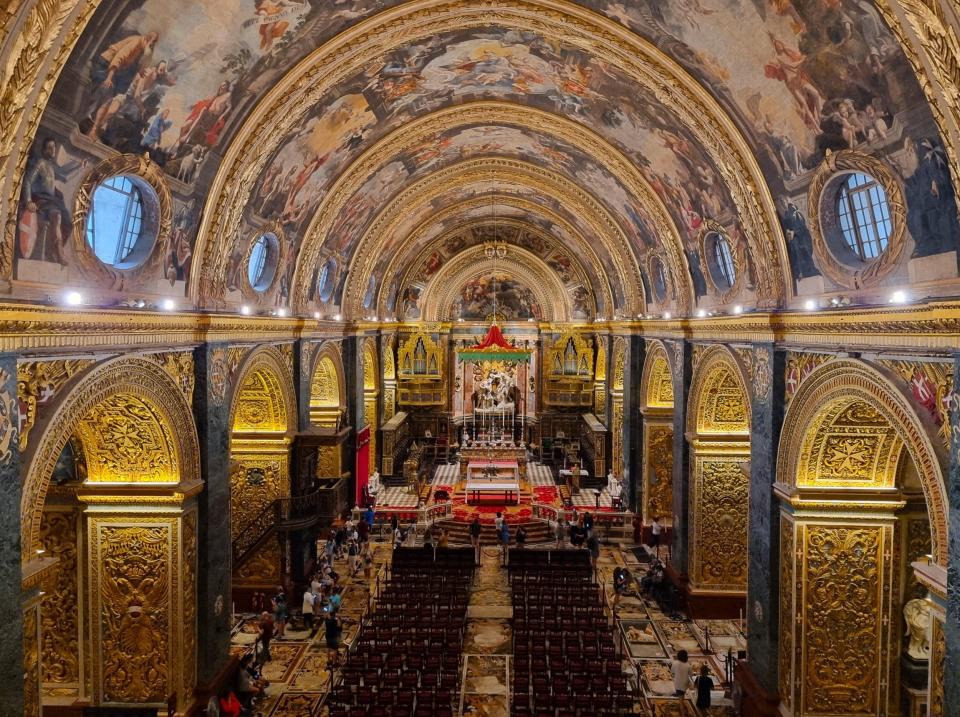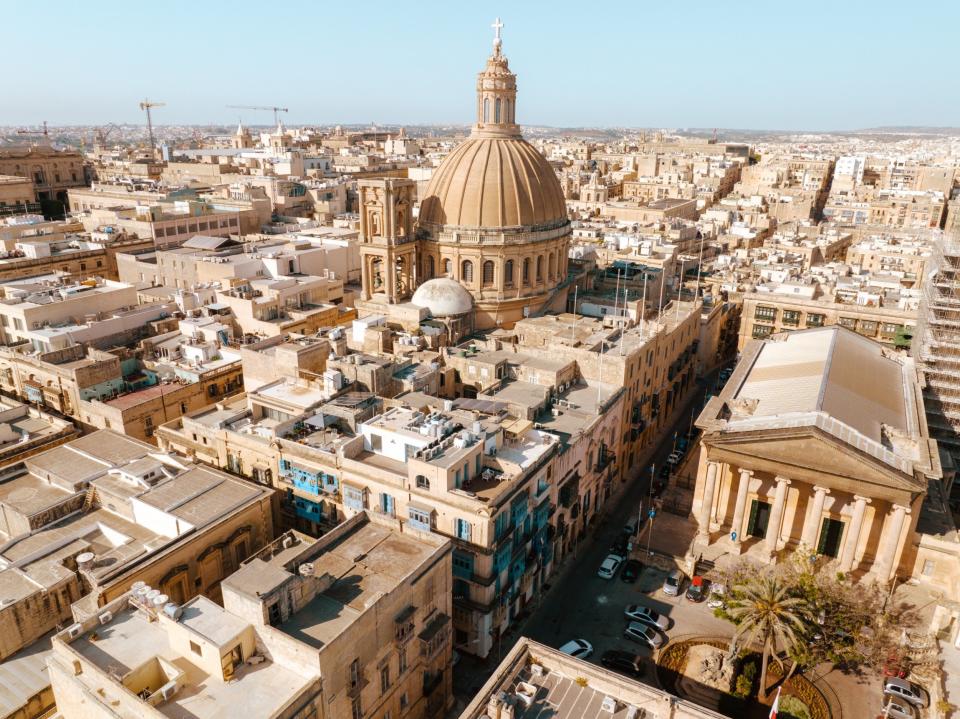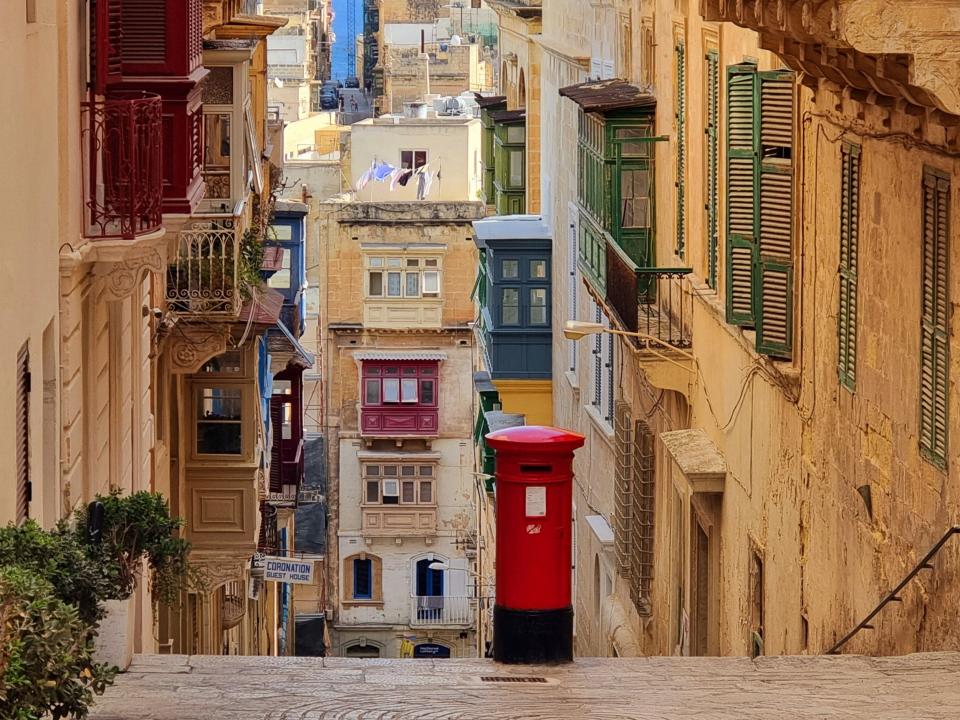A slender honey-hued spire and a massive silver dome dominate the skyline of Malta’s capital, the UNESCO World Heritage city of Valletta. They appear on countless postcards, brochures and guide covers. So, when fragments of masonry began to fall from the spire, a massive effort was launched to “Save Valletta’s Skyline.” Their goal was to raise 3 million euros in three years. “About €8 million and almost eight years later,” says committee member Christopher Wicker, “the restoration is complete, at least for now.”
More than one horizon has been saved. The spire belongs to St Paul’s Anglican Pro-Cathedral (“pro” because, although it is a cathedral, it is not the seat of a bishop, but is part of the Diocese in Europe which serves Anglicans across the continent) . This was the first major neoclassical building in the city of the 16th century Knights of Malta, the first Anglican church in this devoutly Catholic country, and remains today an embodiment of Anglo-Maltese relations since colonial times.th century onwards, including Malta’s key role in the Second World War.
It all began in 1838 with a convalescent trip to Malta by the Dowager Queen Adelaide, recent widow of King William IV and aunt of the newly crowned Queen Victoria. Horrified to find the British colony’s Anglican congregation holding services in a cramped room that had been a kitchen in the Palace of the Knights Grand Master, Adelaide contributed £8,000 to build a church (her final bill was more than double; some things don’t). t change).


Within weeks, the British governor of Malta had given orders for a site to be prepared by demolishing the Auberge d’Allemagne, the 16th century home of the German section of the Knights, leaving only the basement to be converted into the cellar of the Cathedral. No one seems to have mourned this loss, least of all Adelaide, a German princess, who herself laid the first stone of the new church amid much colonial pomp.
However, construction did not go smoothly and the young, inexperienced British designer died (thought to have committed suicide) after the half-constructed building began to crack. Utterly embarrassed, the colonial power recruited British Admiralty architect William Scamp, who had helped restore Windsor Castle and was in Malta to build the naval bakery across the Grand Harbor (now the National Maritime Museum).
In 1844 he completed this robust neoclassical church with a monumental façade of Ionic columns inspired by St Martin-in-the-Fields in London, but here hidden in a side street of Valletta limestone steps. Entering through the main entrance located on the side wall, we find an elegant but simple interior, too simple according to some. It was (and is) certainly a far cry from the dazzling baroque cacophony of gold, paint and colored marble inside the Knights’ main church, St John’s Co-Cathedral, just down the street.


The 60-meter bell tower was also a source of controversy. How, the Maltese protested, could Malta’s fervently Catholic capital be dominated by the spire of an Anglican church, especially one that attacks Malta’s patron saint, St. Paul?
The Bible tells of the shipwreck of Saint Paul in Malta in the year 60 AD. The story goes that Paul lit a fire to warm himself and a snake emerged from the undergrowth and bit him. When he suffered no ill effects, the locals saw it as a miracle and revered Paul, who went to heal the Roman governor’s sick father, Publius, and converted him to Christianity.
Churches in Malta have always been competitive. When the Carmelite Catholic order of Valletta decided to rebuild their church in the mid-20th centuryth In the 19th century, the architect was given specific instructions to ensure that the dome rose higher than the bell tower of its Anglican neighbor, so Scamp’s spire was joined by the dome that now accompanies it in so many images of Valletta’s skyline. .


Anglican-Catholic relations are better now. The cathedral’s new chancellor, the Reverend Canon David Wright, fresh from Wolverhampton (and former Wolves FC chaplain, which won’t do him any harm in football-mad Malta), says St Paul’s is “the closest of Catholicism than Anglicanism”. . And the cathedral regularly hosts events for the current (Catholic) Knights of Malta.
In fact, the main altarpiece is on semi-permanent loan from a gentleman belonging to one of Malta’s leading Catholic families. The Marquis Nicholas de Piro, whose house, Casa Rocca Piccola, is one of the last traditional palaces still occupied in Valletta, has provided the Anglican cathedral with an Ecce Homo by Alfred Chalon RA, painted in the year of the cathedral’s opening.
Flanking this painting, beneath tall Corinthian columns and A handful of colorful royal and military banners, it is a series of very English-looking oak panels covered with the names of British military units involved in Malta’s critical role in the Second World War. The Allied Mediterranean Fleet was based in the Grand Harbor of Valletta and the invasion of Sicily was planned from the Lascaris War Rooms, a secret headquarters deep within the city streets. This area was for a time the most bombed place on Earth, and the cathedral was hit, although not destroyed. So important was it that Malta resisted the Axis siege that in 1942 George VI awarded the entire population the George Cross, which still appears on the national flag.
In the Anglican cathedral there are monuments to the Royal Navy, RAF and merchant marine, and outside in the restored tower there is one dedicated to the Allied submariners, opposite their base in the Knights-era fort on the other side from the port on Manoel Island (also recently restored). The military connection has endured; so has royalty.


Princess Elizabeth and her new naval officer husband Prince Philip worshiped here when they were in Malta, a very happy period for the couple who lived a relatively normal life in a villa in Valletta. Prince Philip became the cathedral’s patron, remaining so until his death, and King Charles, or Prince Charles as he then was, was an early contributor to the restoration fund.
The EU contributed €4.2 million, with the rest of the money raised through donations and events overseen by British expats, the late Sir Martin Laing (of the construction company) and his wife Lady Stephanie, and Martin Scicluna, part of a prominent Maltese banking and brewing family. Valletta without the Pro-Cathedral spire, Scicluna said, was “as inconceivable” as Venice without St. Mark. There is certainly no doubt that Valletta’s skyline has been saved, with the freshly cleaned spire rising safely above the rooftops once again.
“Mission accomplished,” says Wicker, “although the roof… and the façade…”
St Paul’s Anglican Pro-Cathedral in Valletta (entrance from West Street) is open free of charge to visitors from 10am to 4pm Monday to Friday. The main English service is Sunday at 11 a.m.
See our complete guide to visiting malta.